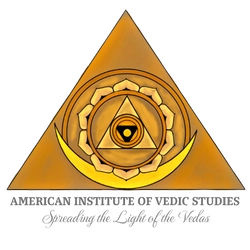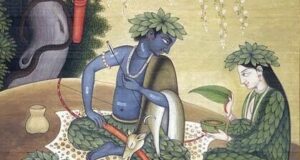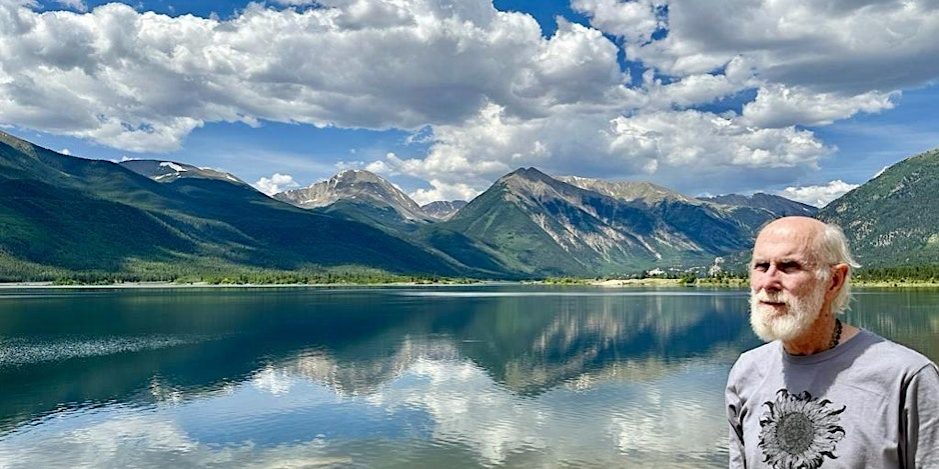 Order On Amazon
Order On Amazon
Vedic Yoga: The Path of the Rishi
Vedic Yoga like classical Yoga is a complex and many-sided discipline designed to address the needs of different levels and temperaments of individuals. Vedic Yoga addresses all of life and works with all of nature, like a symphony using many instruments, with many movements, scales, tones, and harmonics. Though it has its practical methodology and precise application, Vedic Yoga cannot be reduced to a simple pattern, formula, or method. One could compare it to a great banyan tree, with roots in both the air and on the ground, and many trunks and branches, on which many creatures live and find nourishment. Its very complexity is daunting as it reflects the teachings of numerous seers over many centuries.
Beyond its seemingly immense intricacy and labyrinthine maze of forces, however, Vedic Yoga follows a coherent and structured process that unfolds in each individual human being in a similar manner. Though we are all different at one level, at another level, we are all part of the same species, the same life and consciousness, following the same rhythm of action and expression. In our inmost souls, we all reflect the Divine Will to reach the Supreme, which has its own law and follows its own seasons. Once we understand the basic principles of the Vedic Yoga, we can discern how its apparently discrete elements fit together into an integral and organic whole. That is why in the end, whatever Vedic deity is followed, one merges the deity into light, bliss, oneness, and transcendence.
Vedic Deity or Devata Yoga
The Vedic is a “Deity Yoga,” or Devata Yoga, as is common in Hindu, Buddhist, and native traditions. Vedic Yoga requires that we awaken the deities within our own minds and hearts and learn to work with them through the forces of the universe. The Rigveda in particular is the Vedic book of the deities or Devatas, revealing their names, natures, and functions. It is through these Divine powers that the Vedic Yoga and Vedic Dharma proceeds.
Mere practice of Vedic mantras and techniques is not enough to constitute a complete Vedic Yoga. Vedic deities are the agents and instruments of the Vedic Yoga, not we ourselves, our ordinary minds and human personalities. To understand the Vedas, we must understand the meaning of the Vedic deities and come to a living experience of their manifold powers.
Each Vedic deity represents an important approach to inner knowledge, energy, and delight. It is both a reflection of the Supreme Godhead and a way to its realization. We can experience these Vedic deities like Indra and Agni as vividly as any other Divine form or manifestation. Ultimately, the Vedic Yoga requires that we understand the deities or cosmic powers behind all that we do. This begins with the biological forces behind our body, breath, and senses, and extends to the spiritual principles behind the cosmos.
Vedic Yoga as Rishi Yoga
The Vedic Yoga is a Rishi Yoga, a Yoga of the seers. It requires a seer-vision in order to fully apply it. Something of the Rishi consciousness is necessary in order to appreciate the Vedic Yoga, or understand the intricacy of the Vedic language. The Vedic Yoga is not for those who cannot discern the inner meaning of words, images, symbols, and aspirations. The Vedic mantric language is the language of the Rishis and cannot simply be approached as any ordinary form of discourse.
Vedic Yoga aims at turning us as human individuals into Rishis. For this we need to awaken the seed of Rishi consciousness within our own hearts and nourish it with Yoga, sacrifice, search, and devotion. Vedic deities are the cosmic counterparts of the Rishis. The Rishi is the one with the power to invoke the deity, and the deity is the means through which our Rishi consciousness is energized at a cosmic level.
Agni, Awakening the Soul’s Search for Divinity Through its Many Lives
The first step of Vedic Yoga consists of awakening the soul or the deeper consciousness of immortality within us. Yoga in the inner sense is a process for the soul or our eternal being to unfold. Yoga is not for the profit or entertainment of our transient personality caught in the illusions of this present birth. Yoga’s purpose is to develop the greater potentials of our inner being, of which our outer personality and self-image are but a veil. One must first be willing look beyond the ego-self, its urges, demands, and expectations to be able to approach Yoga in the classical sense of the term.
In yogic thought, what could be called the soul or inner being is the individual Self, our internal or core consciousness that persists throughout the karmic cycle of birth and death, the Jivatman of Vedantic thought. The soul has many bodies, lives, and personalities. Yet behind these outer formations, the soul has an inherent sense and sure awareness of its own immortality, its Divine purpose, and goal. For Yoga to be an authentic spiritual practice, it must be done by the soul. Yoga done by the ego or by the mind is a Yoga done in the shadows, not in the light of higher awareness. Our practice of Yoga must be a practice of the heart beyond social, commercial, personal, and cultural concerns. This Yoga of the heart is not a Yoga of the physical, emotional, or psychological heart. It is a Yoga of our immortal essence as an eternal soul, whose true labor in its many lives is Yoga, the search to realize its divine and cosmic Self.
Awakening the soul of Yoga requires bringing our inner fire or soul flame forward as the guide and master of our being. It means awakening to our inner guru and linking up with the inner tradition of truth. This usually requires the light of the outer guru, teaching, and tradition, in one form or another, to help us. Lighting our inner fire and keeping it burning throughout all our states of consciousness as waking, dream, and deep sleep, is the foundation of all deep Yoga and meditation. This “Yoga of the Inner” Fire,” or Agni Yoga, consists of the cultivation of higher awareness through mantra, inquiry, and meditation.
At first, this Agni or sense of God-consciousness is but a spark, a flicker or a small flame hidden deep in the subconscious mind, a mere latent possibility. The Vedic Yoga rests upon a surrender to that fire and a cultivation of it, until it can guide us back to the universal light that is its origin and goal. Yoga consists of various offerings of body, speech, senses, mind and heart into that inner fire. The fire in turn grows with each offering, granting us greater illumination, understanding, and well-being.
Eventually that small spark becomes a mighty flame that consumes all impurity – then expands into a great spiritual Sun within us, full of truth and light, with unlimited powers of illumination. The power of Agni, its tapas-shakti, purifies, heats, ripens, transforms, and delivers us from the darkness to the light. We cultivate that fire through right intention, consecration, mantra, inquiry, and meditation. This inner fire develops through a higher power of the will, higher values, and a deeper search and inquiry in life. Through it, all the other Divine powers have a place to manifest within us, according to their nature and their qualities.
Developing Indra, the Master Force of Self-realization
Once the flame of the soul is awakened and has come forth to guide our development, manifesting the Gods or Divine powers, we must soon contact and set in motion the master force, the Divine consciousness, in order to achieve the ultimate goal. The Vedic God Indra represents the cosmic consciousness that descends into the human being as the lightning flash of direct perception that reveals the highest truth. This descent of grace from above links up with the ascending power of our soul fire from below. Indra is the God-consciousness within us that carries the cosmic and supracosmic Divine in seed form. As ascending and descending forces, Agni and Indra complement one another and comprehend the yogic quest.
This Indra consciousness enters through the fontanel and takes its seat in our heart along with Agni. Indra manifests through the perceptive power of the higher or great prana (Maha Prana), the master life-force behind the universe that is ever seeking greater self-expression, self-mastery, and self-realization—ever marching forward to the goal of realizing the entire universe within the mind. These two great powers of Indra and Agni, enlightened prana from above and awakened will-power from within, overcome all obstacles and manifest all the Gods or truth principles.
The cultivation of the master force consists of pranayama, discriminating insight, and deep meditation. It involves a revolution at the core of our consciousness itself. This means an inner battle between the powers of light and darkness, a movement from the darkness to the light, in which we can no longer accept anything limited and superficial into our being. Indra is the spiritual warrior who causes us to see the supreme. Though the Indra force begins to manifest at an early phase of the Vedic Yoga, it is only when the Yoga is complete that his full power can be known. Otherwise that Indra energy must face various obstacles and opposition, the various enemies that he must defeat and conquer along the way.
Developing Surya, the Enlightened Awareness
There are many Vedic Sun Gods called Adityas, which mean “powers of unbounded energy and forces of primal intelligence,” sons of the great Goddess Aditi of boundless space. The Adityas represent the different powers and principles of the illumined mind and heart. Following a solar symbolism, they are said to be seven or twelve in number. The Adityas reflect the principles of Dharma and modes of conduct. Each indicates a teaching that is necessary for our higher realization.
Most important of the Adityas are the pair Varuna and Mitra, who much like Soma and Agni – which they are often identified with – represent the overall cosmic duality. Varuna and Mitra are great Lords of Dharma and instill in us Dharmic values, allowing us to lead a Dharmic life. Varuna, which means “the vastness,” represents the discrimination between truth and falsehood, the recognition of karma and the necessity for purification. There is something stern about our meeting with Varuna, who effaces the ego into the higher truth. Yet Varuna protects the Soma principle or cosmic waters, which his grace releases once we have purified ourselves. Along with Varuna is Mitra, who is the deity of compassion and love, complementary to Varuna’s stern judgment. Mitra, which means friend, is the Divine Friend who leads us like a friend and causes us to seek friendship and harmony with all. Mitra connects us to Agni as the principle of light and the inner guide.
Along with Mitra and Varuna, Aryaman is the third Aditya, the one who holds the power of nobility and refinement (Arya). Aryaman represents law and force in action, the ability to help, mediate, and harmonize. Mitra, Varuna, and Aryaman govern the three higher luminous heavens (rochanas) beyond the ordinary three realms of earth, atmosphere, and heaven.
The fourth Aditya is Bhaga, who holds the supreme power of bliss and delight. He resembles a masculine counterpart of the Goddess Lakshmi, granting not only worldly wealth, but also spiritual abundance and the richness of devotion. Mitra, Varuna, Aryaman, and Bhaga form the four kings or great rulers of Dharma. Bhaga is associated with Savita, the transformative aspect of solar energy, which represents the ascending Divine will in creation.
Our Agni, the flame of our inner mind, develops the truth principles and dharmic powers represented by the Solar Godheads. There is a progressive development and expansion of the light of truth from this inner flame to the universal Sun. The Sun Gods complement the master force and insight of Indra, adding various powers of knowledge and illumination. The Yoga of the higher mind involves meditation on the Adityas and awakening their powers within us. Indra is present behind them as their ruling force.
Developing Soma: The Ecstasy of Samadhi
Yoga is a methodology of achieving the state of samadhi, the level of bliss or Ananda, in which the mind is absorbed in God or in the Self that is its origin. Soma is the Vedic deity of samadhi, in which all the Vedic deities merge. Soma is lauded as the king of the Gods. All Vedic deities drink the Soma, are energized by the Soma, and are themselves manifestations of the Soma power of bliss. This Soma or bliss is the creator of all but also the goal of all.
Agni is enkindled in order to prepare the Soma. Indra reaches its fullness of power by the Soma or ecstatic essence of delight of which he is the main drinker. It is his drinking of the Soma that energizes Indra and affords him his master power. The Sun as an enlightenment force exists to take us to the higher bliss of Soma. Soma is the food, milk, and lifeblood of all the Vedic deities. It is the unfoldment of the inner Soma that makes one into a Rishi or a seer and gives great creative powers. Vedic Yoga reaches its culmination in the free flowing of Soma that is the highest samadhi. In samadhi one learns to drink the immortal Soma that is the consciousness of immortality.
Other Vedic Deities
The many deities lauded in the Vedic hymns also have their roles in the Vedic Yoga, generally defined relative to the sphere of the main deity that they relate to as earth (Fire or Agni), atmosphere (Indra), and heaven (Sun or Surya).
There are many forms of Surya or the solar force of light and the world of heaven. Along with the many Adityas or the Sun Gods, are the Universal Gods or Vishve Deva that reflect the universal light. There is also Ushas as the Goddess of the Dawn. The many deities of the atmosphere are connected to Indra. These include Rudra and Brihaspati who govern over sound and mantra, and deity groups like the Maruts, Rudras, and Ashvins that reflect prana and energy. Agni and Soma do not have as many associated deities in their respective spheres but have many names and forms of their own. Agni is associated with a group of deities called the Vasus. With Soma are watery deities and Goddesses.








